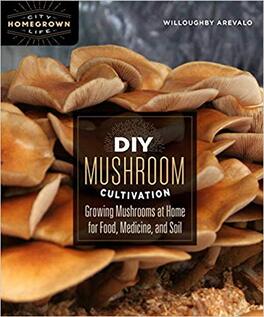 review originally published in the NJMA Newsletter, Volume 50-1 January-February 2020 DIY Mushroom Cultivation: Growing Mushrooms at Home for Food, Medicine and Soil By Willoughby Arevalo Published by New Society Publishers (June, 2019). (184 pages) ISBN 9780865718951 When the opportunity to review this book for the NJMA newsletter came along I jumped on it! Despite my history with cultivation of mushrooms, I've never actually read a cultivation book. I've learned everything by watching and doing. I attended a class taught by the author, Robert Rogers and Olga Tsogas of Smugtown Mushrooms which was quite intimate and intense, about 20 strangers in a house in the woods for 3 days, eating and learning together. Willoughby was knowledgeable and entertaining, but researching more after the class I found no website, Facebook or other way to easily get more from him, until this book. 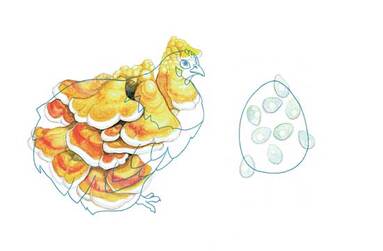 This book was informative and thorough. The artwork and diagrams were helpful and enhanced my grasp on the topics. Some of his views come through which I thought were refreshing such as shifting our way of speaking from old terms such as "colonization" a rather European/human term, to "myceliation". And gasteroid "Do you know of any other beings that make their reproductive units in stomach-like structures? I think we should call these species the uteroid fungi." These ways of thinking carry over into his cultivation methods as well. Chapter 1 covers mushroom basics including taxonomy and life cycle. Chapters 2 and 3 discuss the many details of designing your business, workspaces, tools, lab setup. Options for growing spaces range from hanging a bag in your shower to larger climate controlled fruiting rooms, the many details of which are discussed. Chapter 4 covers sanitation, the contamination that inevitable will occur, how mushrooms are made to deal with it and how we should deal with it. I laughed at a method for dealing with the insects- vacuuming them up from the air, which works but looks quite silly if you don't know what is going on! Chapter 5 is about starting and maintaining cultures from spore prints to liquid syringes, agar and cardboard all with step by step instructions. Chapter 6 covers grain spawn and the many methods of sterilization and transfer. Chapter 7 is all about the fruiting and the many vessels and substrate options that exist for fruiting. Chapter 8 covers outdoor growing and what to do with your spent blocks, which often end up outside. Chapter 9 is the final product and how to harvest, process, cook, use for medicine, mycoremediate and different art you could create. Appendix 1 has basic but nice species profiles covering mushroom descriptions, ecology, methods of cultivation, difficulty level and yield, growth parameters, medicinal and nutritional properties, culinary value and use for 12 of the most common cultivated food and medicinal mushrooms. Appendix 2 has a lengthy list of resources for spores, supplies, further reading, stores, education, and gatherings which I thought covered everything. I think this is a great book for a beginner or someone looking to grow some mushrooms as a hobby or small scale production. As a more experienced grower I was excited to learn a few new tricks and methods that I've never ventured into like Liquid Cultures and different sterilization techniques. Some of them I'd never bother with personally, unless I'm a survivor of the apocalypse, but I can appreciate that anyone, anywhere can attempt to grow mushrooms to feed themselves. He covers options for spawn expansion for people who can't obtain or afford to spare the simple grains, the usual medium for spawn expansion, to use to grow a crop through more advanced lab techniques requiring sometimes expensive equipment. He encourages using various containers that could be found in the trash and/or recycled for growing in, something once again accessible to most everyone. Anyone can use this book to start growing mushrooms from those with incredibly limited resources, to urban settings and very small spaces, to farms with large amounts of land and natural resources. He touches on many ideas of eco-consciousness like using invasive plant material for substrates and other waste for substrate. The problem so many of us growers battle, the horrible single use plastics is mentioned and alternatives offered. There is a fun section encouraging us to think like a mushroom with 12 or so actions to follow.
0 Comments
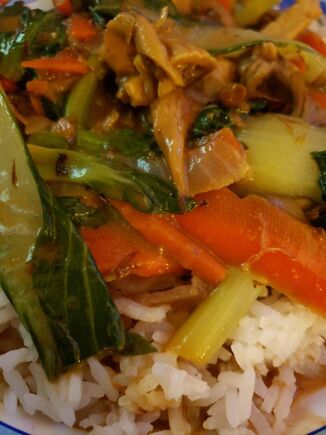 This is our first recipe post. We're no professional chefs, but we do cook most of our meals. We like recipes that take don't take hours. We also hate when blogs waste my time with ads, huge pictures and tons of words telling me one's life story connected through this recipe. So we're just jumping right in! This recipe will take about an hour total, maybe longer if you enjoy a cocktail and conversation while cooking like we do. It will feed 4-6 people. (We like leftovers so we don't have to cook every night) 1 pound meat of your choice, or make it vegetarian and don't (chicken, pork, beef, shrimp) 1/2 to 1 pound mixed mushrooms torn into strips (use more if you are not doing meat or just want it extra mushroomy) 2-3 carrots, julienned Kaffir lime leaves or other citrus, lemongrass 2-3 cloves garlic (chopped, minced, or grated) Thumb sized portion of ginger (chopped fine or grated) Bok Choy (I used a nice sized bag full from our CSA share from Drop the Beet Farms) 2 cups broth (veggie, chicken, mushroom, etc.) 1 can coconut milk Soy Sauce Sriracha (optional) Cilantro and or thai basil Scallions Cut the meat, if you're using it, into strips (I did about 1"x1/4"). Brown this in a large pan with oil. Remove the meat, leaving the oil and fat in pan, and put meat aside on a plate. Add mushrooms to the pan and sautee over medium high heat for 10 minutes or so. You can add a splash of the broth at the beginning to prevent sticking and having to add more oil. Add the carrots (if you wanted other veggies like broccoli, snow peas, red bell pepper, etc. add these now too) Bruise citrus leaves and add them in. Sautee another 5 minutes or so. Add the ginger and garlic and sautee until fragrant. Stir in the broth, coconut milk and meat, and add bok choy on top. Lower heat and cover. Simmer until bok choy is wilted and tender. Stir it all together and add soy sauce and sriracha to taste. Garnish with Cilantro and Scallions. Serve over rice or rice noodles. Other notes… -You could marinate the meat first. We used a bit of soy, mirin, orange juice, honey and garlic. -Chestnut mushrooms add a nice texture. Oysters and shiitakes are always great. Lion's mane makes a great meat replacement. -If you're not lucky enough to find kaffir lime leaves, other citrus will do. Lemongrass can be an alternative or in addition to the citrus. In a pinch, try some lime juice and zest! -You could add hot peppers to the dish and eliminate the need for sriracha. But sriracha is fine if you forget them like I did! Sriracha is also a good addition to the table if you have some spice sensitive people joining you. -I forgot the cilantro too, sometimes you have it together, sometimes you don't. It was still delicious. 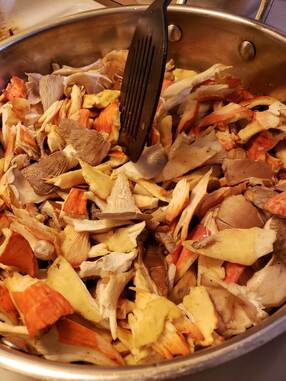 Is this really necessary? Is this really necessary? It's a question I get often at the store and markets. Some raw mushrooms might be ok for you, but some might not be ok for your neighbor, some raw mushrooms might make you sick, some might really hurt you or worse. Most people have lived their entire life eating those white button mushrooms raw on a salad or with dip. Most people have had no problem from doing so. I'm included. I've also eaten some other mushrooms raw, just to taste it and see what it was like. Never a problem there either. I love some aspects of a raw food diet. Some. It just doesn't work for everything all the time. Here are some reasons why you might want to think twice about eating raw mushrooms. 1. Cooking helps to eliminate germs. Have you ever watched how people behave in the supermarket? All those fingers touching, squeezing, holding the produce to inspect it. Do you think they just washed their hands? Sure, some of the mushrooms are pre-packaged. But someone had to touch them at some point. I know, I sound like a germaphobe. I'm not. Coming in contact with germs is how you build a stronger immune system. Some vegetables, or fungi are not easy to clean. Have you ever tried to scrub every nook and cranny of broccoli or lion's mane mushroom? It's not easy. Ok, I've never bothered. Raw broccoli contains all sorts of vitamins that are beneficial to your immune system helping you to fight germs. Cooking will also help to eliminate these germs, but might also eliminate some of those vitamins. Eating raw lion's mane, or any other mushroom for that matter will not do anything for your immune system because of chitin.  https://en.wikipedia.org/wiki/Chitin https://en.wikipedia.org/wiki/Chitin 2. Cooking breaks down chitin. What is chitin you ask? Chitin is a fibrous substance consisting of polysaccharides (sugar) and forming the major constituent in the exo-skeleton of arthropods and the cell walls of fungi. It is similar to keratin which is the protein that helps form your hair and nails. Both are polymers whose function is to protect the soft tissues inside of cells. Chitin is beneficial and a great source of fiber, prebiotics and antioxidants. The problem is, humans do not have the ability to break down chitin. So, if we can't break down chitin, how can we get to all the goodies inside the cells that the chitin is trying to protect? Well, in the case of mushrooms, it can be broken down by adding heat, or cooking them. 3. Cooking helps bring out the flavor of mushrooms. Now that the chitin is broken down, the vitamins, and other stuffs that make up mushrooms are able to be released. Some of those stuffs are flavor compounds. I've found that the texture improves too. The raw mushrooms I've eaten tend to be fibrous, leaving things stuck all over your teeth and throat. Can you overcook mushrooms? And won't the nutrients get cooked off? It's hard to overcook mushrooms, unless of course you burn them. Sometimes they can become tough when cooked too long, but your eyes will probably tell you their done before that point. Vitamin C is the only nutrient that will be cooked off. Just go eat an orange, you'll be ok. 4. Wild mushrooms. When it comes to wild foraged mushrooms, there are many reasons to cook them. These mushrooms were out in the wild, with all kinds of other wild things. Wild things that have a different idea of cleanliness and life. Bladder control and the idea of not shitting where you eat is not a priority. See above, #1... 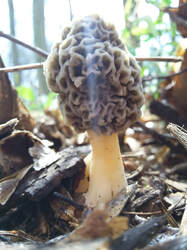 Definitely cook this Morel! Definitely cook this Morel! Some wild mushrooms contain mildly toxic substances that are destroyed by cooking them. Morels being one of them. You may have heard the story a year ago where some people were poisoned at a high end restaurant in Spain. It's hard to say what the cause was. It could have been an undercooked mushroom. They were eating morels, which contain hydrazine toxins which are broken down with heat. Or it could have been a mistaken identity. Morels can often be confused with False Morels which contain gyromitrin, a liver damaging toxin. One woman died, her family survived with only gastric upset, as did 18 other diners. Individual sensitivities play a large roll. Then there is the Amanita muscaria mushroom. That iconic red mushroom with the white spots on the cap. This is not a mushroom I bother eating. These mushrooms need to be boiled and the water changed in order to break down the chemicals ibotenic acid and muscimol, which are water soluble. That seems a bit risky and a lot of work with room for error. There are so many other delicious mushrooms out there, I'd rather enjoy!
Many mushrooms in the Agaricus family (white buttons, portabellos, cremini, contain agaritine. Agaritine is a weak carcinogen. By weak, I mean that you have to eat A LOT of mushrooms. It also is broken down very easily through oxidation, cooking or freezing. The verdict is still out on whether or not we should worry about this. Much of the testing has been in labs with very large amounts in a short period of time. Some mushrooms such as boletes, chanterelles and honeys will likely lead to gastrointestinal irritation if you eat them raw. I've also found research that shiitakes can cause allergic dermatitis in some people if eaten raw. |
AuthorWe're a couple of mushroom fans. We grow mushrooms. We cook mushrooms. We create mushroom snacks. We forage mushrooms. We sell mushrooms to chefs. We sell mushrooms to the public. We study mushrooms. Amateur mycologists. Archives
December 2022
Categories
All
|
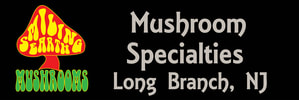
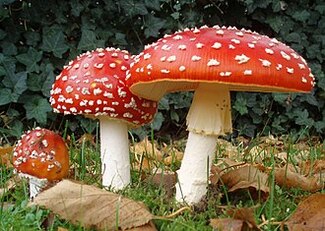
 RSS Feed
RSS Feed